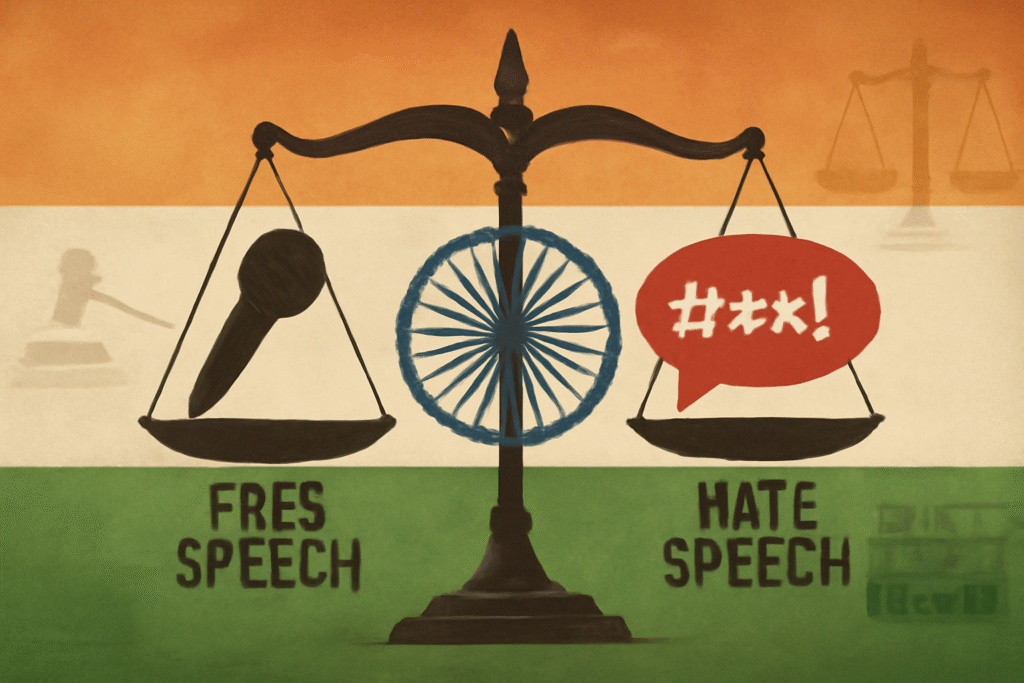Published on: 04th October 2025
Authored By: Snigdho Dhar
University of Engineering and Management
Introduction
The brutal rape and murder of a 31-year-old postgraduate trainee doctor at R.G. Kar Medical College and Hospital in Kolkata on August 9, 2024, exposed critical failures in institutional safety protocols, criminal investigation procedures, and victim protection mechanisms. This case, which culminated in the conviction of civic volunteer Sanjay Roy on January 18, 2025, raises profound questions about workplace safety for medical professionals, the integrity of institutional responses to sexual violence, and the effectiveness of India’s criminal justice system in handling high-profile cases.
This article examines the legal dimensions of the RG Kar case, analyzing the investigative process, judicial interventions, and the broader implications for workplace safety legislation and criminal justice reform in India.
Factual Background
On the night of August 8, 2024, the victim completed a 36-hour shift at R.G. Kar Medical College and Hospital and retired to a seminar hall on campus. Her body was discovered the following morning in a semi-nude state with severe injuries. The autopsy revealed she had been raped, sexually assaulted, and strangled. The medical examination documented extensive injuries including a fractured thyroid cartilage, genital trauma, and bleeding from multiple orifices.
Initially, college authorities informed the victim’s family that she had committed suicide—a claim quickly disproven by forensic evidence. This initial misrepresentation became one of several procedural failures that would plague the case.
Investigation and Arrest
Kolkata Police arrested Sanjay Roy, a 33-year-old civic volunteer attached to the police disaster management force, on August 10, 2024. Roy had been posted at the police outpost near the medical college. According to police statements, he initially confessed to the crime, though he later recanted this confession during trial proceedings.
The Central Forensic Science Laboratory in Delhi conducted a psychological analysis of the accused, with officers reporting that Roy “showed no remorse and was unflustered while narrating the incident.” A court-ordered polygraph test revealed inconsistencies in his account of events on the night of the crime.
Judicial Transfer to CBI
On August 13, 2024, the Calcutta High Court transferred the investigation from Kolkata Police to the Central Bureau of Investigation (CBI), citing lack of confidence in the state police’s handling of the case. This transfer highlighted serious concerns about institutional competence and possible evidence destruction.
The High Court’s decision to invoke its inherent powers to transfer the investigation reflected judicial recognition of systemic failures in the initial response. Such transfers, while not unprecedented, signal extraordinary circumstances requiring federal intervention.
Supreme Court Intervention
The Supreme Court took suo moto cognizance of the case on August 18, 2024, with a three-judge bench headed by Chief Justice DY Chandrachud hearing the matter on August 20. The Court’s intervention addressed multiple legal issues:
Procedural Delays: The Court criticized the significant delay between the discovery of the body and the registration of a First Information Report (FIR), noting that such delays compromise evidence preservation and suggest procedural irregularities.
Workplace Safety: Recognizing the systemic nature of safety failures in medical institutions, the Court constituted a National Task Force to ensure workplace safety for doctors—a proactive measure that extends beyond the immediate case to address structural problems.
Victim Privacy: In line with India’s rape shield laws, the Court ordered removal of the victim’s name and photographs from social media and electronic platforms, including specific instructions to Wikipedia on September 17, 2024. This action reinforced the principle that victim identity protection is paramount, even in cases of intense public interest.
Right to Peaceful Protest: The Court balanced competing interests by protecting the rights of protesting doctors while urging them to resume duties, recognizing both their legitimate grievances and public health obligations.
Institutional Accountability
The investigation expanded beyond the immediate perpetrator to examine institutional complicity. The CBI filed an FIR against Sandip Ghosh, the former principal of R.G. Kar Medical College, and Abhijit Mondal, the Station House Officer of Tala Police Station, for evidence tampering and misleading the investigation.
Ghosh faced accusations of delaying FIR registration and mishandling critical evidence. The Enforcement Directorate launched parallel investigations into financial irregularities at the hospital, revealing a pattern of corruption that may have compromised institutional oversight and safety protocols.
These arrests underscore an important legal principle: criminal liability extends not only to direct perpetrators but also to those whose actions facilitate crimes through negligence, obstruction, or misconduct.
Trial and Conviction
On January 18, 2025, Sanjay Roy was convicted under Sections 64 (rape), 66 (causing death or resulting in persistent vegetative state), and 103(1) (murder) of the Bharatiya Nyaya Sanhita, 2023. Two days later, Additional District and Sessions Judge Anirban Das sentenced Roy to life imprisonment and imposed a fine of ₹50,000.
Significantly, the court ordered the state government to award ₹17 lakh (approximately $20,000) as compensation to the victim’s family, recognizing that the crime occurred at the victim’s workplace—an acknowledgment of the state’s vicarious responsibility for workplace safety.
The “Rarest of Rare” Doctrine
Judge Das explicitly stated that the case did not meet the “rarest of rare” standard established in Bachan Singh v. State of Punjab (1980), which restricts death penalty imposition to exceptional circumstances. This decision sparked controversy, with the victim’s family, medical professionals, and political figures expressing dissatisfaction with the life imprisonment sentence.
The judge’s restraint in applying capital punishment reflects the Supreme Court’s evolving jurisprudence emphasizing that death sentences should be reserved for truly exceptional cases. However, given the brutality of the crime and its occurrence in what should have been a safe workplace, reasonable minds may differ on whether this case warranted the ultimate penalty.
Legal Issues and Systemic Implications
Workplace Safety for Medical Professionals
This case exposed the vulnerability of healthcare workers, particularly women, in medical institutions. The National Task Force constituted by the Supreme Court must address:
- Adequate security infrastructure in hospitals
- Protocols for late-night shifts
- Background verification of support staff and volunteers
- Institutional accountability mechanisms
- Emergency response systems
The absence of such protections not only endangers individual professionals but undermines public health by creating hostile work environments.
Institutional Accountability and Evidence Integrity
The initial misrepresentation of the death as suicide and subsequent delays in FIR registration reveal systemic problems requiring legislative attention:
- Mandatory timelines for FIR registration in cases of unnatural death
- Penalties for institutional cover-ups
- Independent oversight of institutional investigations
- Whistleblower protections for those reporting irregularities
Victim Privacy in the Digital Age
The Supreme Court’s directive to remove victim identification from online platforms raises important questions about balancing public interest with privacy rights. While India’s rape shield laws prohibit victim identification, enforcement in the digital age presents challenges:
- Jurisdictional limits on court orders affecting international platforms
- Technological challenges in removing widely circulated information
- Tension between transparency and privacy in cases of public concern
Strike Actions and Healthcare Access
The 42-day strike by junior doctors in West Bengal, while expressing legitimate grievances, created ethical and legal tensions. The Supreme Court’s approach—protecting peaceful protest while urging resumption of duties—attempted to balance competing interests. However, reports of 23 deaths allegedly due to the strike raise difficult questions about the limits of protest when public health is at stake.
Procedural Reforms Needed
This case highlights several procedural deficiencies requiring systematic reform:
- Standardized protocols for handling deaths in institutional settings
- Mandatory forensic audits when institutional explanations conflict with physical evidence
- Time-bound investigations with judicial monitoring in sensitive cases
- Victim family involvement in investigation oversight
- Compensation frameworks that account for institutional failures
Conclusion
The RG Kar case represents more than the conviction of a single perpetrator—it exposes systemic failures in institutional safety, investigative integrity, and victim protection. While Sanjay Roy’s conviction provides some measure of justice, the broader questions raised by this tragedy remain unresolved.
The Supreme Court’s proactive intervention, from constituting the National Task Force to protecting victim privacy, demonstrates judicial willingness to address systemic issues beyond immediate criminal liability. However, legislative action is essential to translate these interventions into durable reforms.
As India continues to grapple with endemic violence against women and systemic institutional failures, the RG Kar case serves as a sobering reminder that protecting fundamental rights requires not only punishing perpetrators but also transforming the institutional environments that enable violence. True justice demands accountability at every level—from individual perpetrators to institutional enablers to policy frameworks that fail to prioritize safety.
The victim’s tragic death should catalyze meaningful reform, ensuring that medical professionals can work without fear and that institutions fulfill their duty of care to those within their walls. Only through comprehensive systemic change can we honor her memory and prevent future tragedies.




